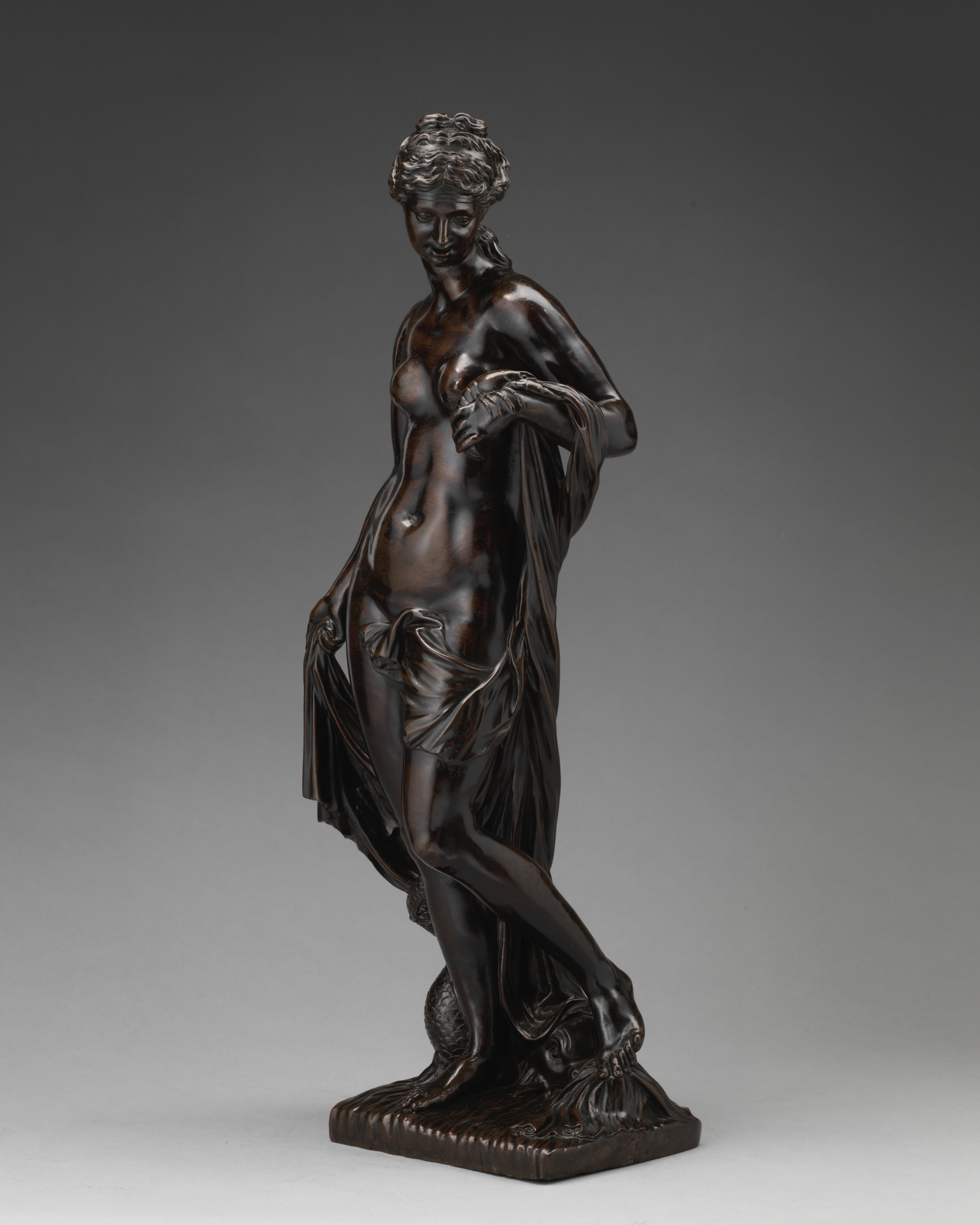Amphitrite
Michel Anguier French
The celebrated French sculptor Michel Anguier studied in Rome under Gianlorenzo Bernini and Alessandro Algardi before returning to Paris to become one of France’s most preeminent artists of the late seventeenth century. Profoundly learned and well-versed in contemporary art theory, he fused deeply studied classicism with the artifice of sixteenth-century mannerism and the theatricality of Bernini’s baroque. In France, Anguier obtained important commissions from prestigious patrons like Anne of Austria and worked on large-scale statues, including the limestone Leda and the Swan of 1654, also in The Met’s collection (1970.140)
In addition to those projects, Anguier also became renowned for his models for small bronze statuettes. In 1652, he conceived a series of six gods and goddesses, each paired and representing a specific temperament, to which this pair belongs. Here, Amphitrite, the goddess of the sea, represents tranquility with her slender nude body and her downcast gaze. She is accompanied by a dolphin and holds in her left hand a lobster or crayfish. For the statuette of Ceres, Anguier adapted a story from Ovid’s Metamorphosis of the weeping, aggrieved goddess of agriculture searching for her abducted daughter Proserpina. Wearing a crown of wheat, Ceres holds a torch in her outstretched right hand, lit by the fires of Mount Etna, and is joined by a hissing dragon at her feet. Her agitated robes cascade into abstracted planes of billowing drapery across her back.
Anguier’s models of gods and goddesses were highly valued and reproduced beginning in the mid-seventeenth century and well into the nineteenth century, with the sensuous but decorous Amphitrite especially popular. The highly proficient casting of the Amphitrite and Ceres and their similarities in facture to other early casts indicate a date of around 1700.
Due to rights restrictions, this image cannot be enlarged, viewed at full screen, or downloaded.
This artwork is meant to be viewed from right to left. Scroll left to view more.




